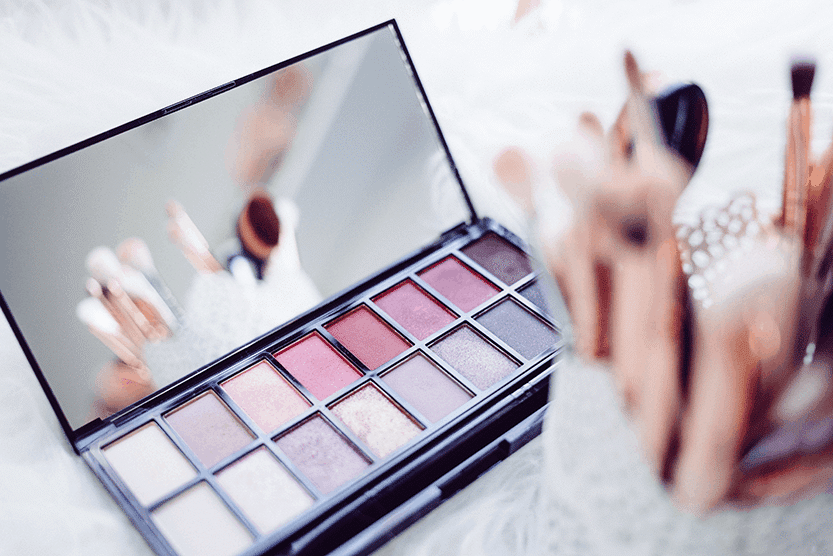Beyond developing technology for beauty devices, brands are using digital media to engage the consumer in new ways.
Technology is becoming an important driving force in the beauty market and brands are utilizing technological innovations to keep up to date and engage their consumers.
Some have been developing new technologies to create beauty devices that offer their customers smarter, more sophisticated solutions; from Foreo’s popular “Luna” cleansing devices – which use pulsation technology to remove dead skin cells and improve the absorption of skincare products – to more niche products such as Color Me’s makeup applicator. The latter uses sonic technology that aims to mimic professional makeup artists tapping techniques when applying makeup; beauty tech devices are making their presence felt in the market.
However, just like in the case of wearable technology, these devices are still met with skepticism by the consumer and are yet to enter the mainstream, occupying a small niche in the market.
On the other hand, when it comes to marketing, the use of technology has been a key disruptor in the market. New beauty labels are using social media to market their launches and engage millennials and Generation Z consumers in new ways.
In this article you’ll learn…
The Kylie Jenner Effect
A benchmark in terms of effective social media marketing is Kylie Jenner’s ‘Kylie Cosmetics’ brand, which started in 2015 with three shades of the now-signature Kylie Lip Kits promoted through the reality star’s Snapchat account. The brand is now on its way to becoming a $1 billion brand, competing with established beauty giants including the likes of L’Oréal and Estée Lauder.
The 20-year-old was able to rewrite the rules of the beauty game, not relying on retail partners like traditional beauty brands do, but by utilizing digital and social media to create buzz around her new launches, have a direct dialogue with her customers and ensure that she has full control over the brand’s message – which would be difficult with a retail partner.
Following the brand’s sellout launch in 2015, Kylie Cosmetics relaunched its signature Lip Kits in February 2016 alongside a range of limited-edition Valentine’s Day shades. Since then, the brand has followed the same pattern of small, targeted drops which Jenner promotes on Snapchat, Instagram and YouTube ahead of the launch.
By focusing the sales on the brand’s own online platform, Jenner can track where they are coming from and plan future launches accordingly. At the moment, 70 percent of the transactions on kyliecosmetics.com take place on a mobile device, which indicates the younger generations’ appetite to consume beauty in a new way that is powered by technology.
Beauty veteran and celebrated runway makeup artist Pat McGrath has been employing similar methods to launch her eponymous colored cosmetics label, aware of the wide reach – and quick sell-throughs – she can achieve if she utilizes her wide Instagram following, which exceeds 1.5 million users.
Pat McGrath has built her business on a similar “limited run” retail philosophy, with seven product drops teased on social media, particularly Instagram, and selling out within minutes of each launch. This month she introduced a “core” collection and to mark the launch she once again turned to social media to source artists and illustrators to collaborate with on the line’s new packaging, creating a sense of community and fostering customer loyalty.
Online Beauty Platforms
As beauty brands are innovating in the online space and finding new ways to generate sales, new opportunities for online retailing are also popping up.
In addition to established e-commerce players such as Net-a-Porter, who are claiming a stake in the market with growing beauty categories, new sites and apps are emerging that are solely focused on selling beauty online.
Cult Beauty is among the most notable online beauty retailers, having earned a reputation for selling off-the-radar brands and presenting them online in new, innovative ways such as video content.
Slapp, a new app by former beauty editor Jameela Robertson, also offers an alternative solution to navigating beauty counters and choosing the right foundation.
Robertson used her extensive knowledge of foundation matching to create technology that matches users to the foundations, concealers and tints that are right for their skin tone, once they take a selfie on the app. The aim of Slapp is to speed up the process of online makeup shopping for tech-savvy millennials: the products you are matched to are available to purchase through the app, which offers same-day delivery.
“I wanted women to be able to shop around with ease. If they spot a new product on Instagram or a blog, I want them to have the ability to buy it there and then, without wondering when they can next go to a big store to get matched, or spending hours online looking for a swatch in their skin tone,” said Robertson, who also creates accompanying video content and beauty features on the app.
As technology, and in particular online media, becomes an increasingly important factor in determining consumers’ purchasing behavior, the brands that are standing out are the ones that are rethinking how they are targeting the consumer and exploring new ways of showcasing beauty products in the online space.
